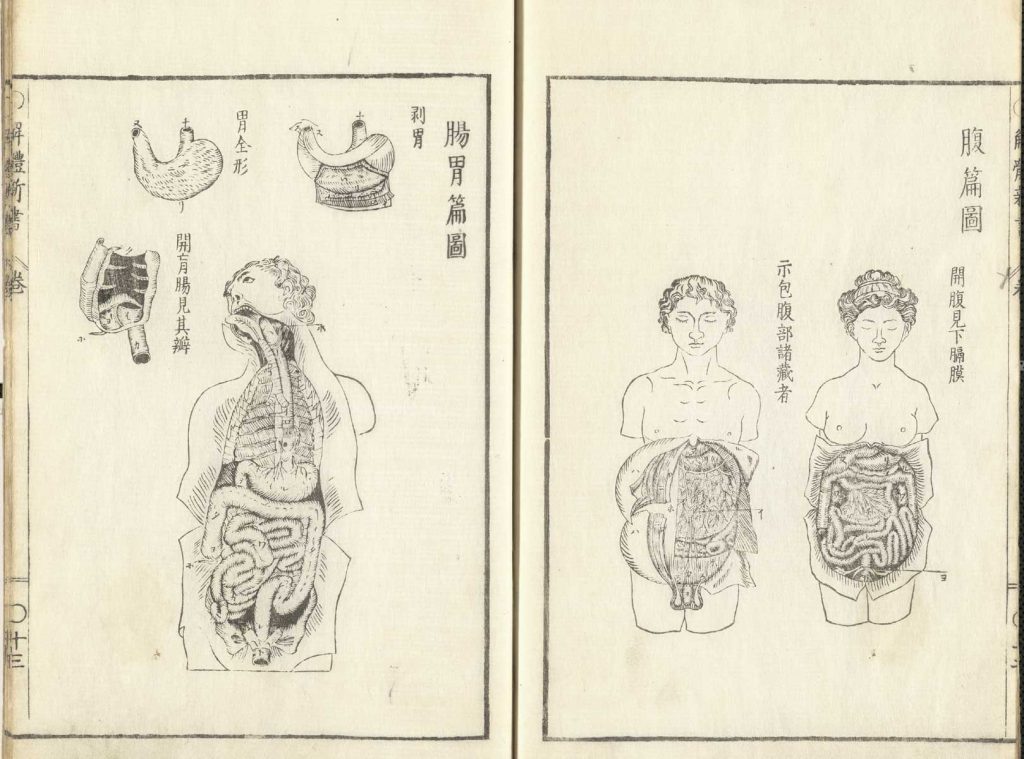Symptoms of Crohn’s Disease in Females
Symptoms of Crohn’s disease in women are similar to men except that women are more prone to gynecologic disturbances in severe cases and may experience pregnancy difficulties if the symptoms are severe and the condition uncontrolled. Prompt diagnosis and treatment are essential for women throughout their reproductive years.

What is Crohn’s disease?
Crohn’s disease is an inflammatory bowel disease (IBD) that causes chronic inflammation of the gastrointestinal tract, and is more common in women than in men. It typically results in frequent abdominal pain and diarrhea, which can cause scarring, fistula formation, and bowel obstructions.
While the cause of Crohn’s disease is unknown, it is thought to occur from excess inflammatory chemicals comparable to anti-inflammatory substances known as antioxidants. Environmental factors and exposure to foreign proteins that trigger an immune response are thought to contribute to the symptoms of Crohn’s disease in individuals with genetic susceptibilities. Despite recent advances, research on animal models has not demonstrated a single factor that is strong enough to cause the disease on its own.1
About 30% of Crohn’s disease patients experience symptoms involving the small intestine, primarily the last part, called the ileum, also known as the distal small intestine, while 20% of Crohn’s cases involve only the colon, and 45% involve both the small intestine and the colon.2 People of all ages and ethnicities are affected equally.
White blood cells invade the bowel tissue, which leads to abscesses, swelling and redness, distorts and destroys the tissue, leading to fistulas or abnormal connections between the bowel and other organs, including the skin. Granulomas are circumscribed ulcers of active Crohn’s disease with damaged tissue, white blood cells, and the repairing process that can lead to scarring.
Other intestinal conditions can exhibit symptoms similar to Crohn’s disease such as ulcerative colitis, tuberculosis of the intestinal tract, Behçet disease, celiac disease, irritable bowel syndrome, and NSAID-induced intestinal damage.34 Infectious bacteria, viral infection, and parasites can also be confused as Crohn’s disease and must be ruled out or investigated along with diverticulitis and appendicitis, which have similar symptoms of abdominal pain and bloody diarrhea, respectively.
Other areas of the body can also be affected by Crohn’s disease, such as the skin, genitals, urinary tract, joints, eyes, and clotting factors in the blood.
Case report: Weight loss in a young woman
An unusual case of Crohn’s disease was presented to me in private practice when I met a youthful looking 16-year-old woman who arrived at my office and stated that she had never had a menstrual period. She was significantly underweight and I suspected this was the underlying cause of her lack of menses. This is known as hypothalamic amenorrhea (lack of menstruation), because the brain’s hypothalamic hormones are too low to trigger the release of hormones from the pituitary.
Subsequently, the ovarian production of estrogen and progesterone depends on the pituitary to trigger the monthly release of an egg at the time of ovulation and to allow the uterine lining to grow in preparation for implantation of the fertilized egg or a menstrual period if there is no fertilization. My young patient had severe weight loss from underlying Crohn’s disease that was poorly controlled, resulting in malabsorption and malnutrition.
Severe malnourishment and low body fat stress the reproductive system to the point that it does not function properly. Due to profoundly low estrogen levels, no uterine lining grows. The low hormones mean that fertility is diminished but can be reversed with weight gain and adequate nutrition. Patients like this are also at risk for osteoporosis or bone thinning, just like women after menopause. The symptoms of Crohn’s disease can adversely impact many body systems for women.
More symptoms and signs of Crohn’s disease versus other bowel disorders
Additional signs and symptoms of Crohn’s disease in both men and women, include fever, bloody diarrhea, rectal bleeding, poor appetite, nausea, vomiting, weight loss, malnutrition, vitamin deficiencies, fatigue, bone loss, and growth failure in children. With all chronic diseases, psychological issues such as depression, anxiety, poor coping, low self-esteem, and poor body image are commonplace.
Because the small intestine is diseased in most cases, malabsorption of nutrients is the root cause for most symptoms in Crohn’s disease. When the colon and anus are involved, perirectal pain, foul discharge, and abnormal communications between the bowel and other structures, known as fistulas, can occur. The urgency to defecate, mucus-coated stool, cramping, and pain can be almost indistinguishable from the other type of IBD, ulcerative colitis.
Before I discuss the specific perils that women face from Crohn’s, it is useful to explain the specific differences between Crohn’s disease, ulcerative colitis (UC), and Irritable Bowel Syndrome (IBS). As stated earlier, abdominal pain in any location can be experienced for all the following conditions along with diarrhea in Crohn’s and UC. IBS, on the other hand, can cause constipation, diarrhea, or both.
Characteristics differentiating Crohn’s disease, ulcerative colitis, and IBS
| Crohn’s Disease | Ulcerative Colitis | Irritable Bowel Syndrome | |
|---|---|---|---|
| Location | Entire GI tract Skip lesions | Rectum/colon continuous | Small bowel |
| Pathology | Full thickness of the bowel wall; Granulomas | Inner lining only; No Granulomas | No inflammation |
| Radiology | Entire GI tract, skip areas, fistulas | Colon only starting at the rectum, no fistulas | No findings |
| Cancer Risk | Increased | Estimated to be 3% at 10 years, 8% at 30 years, and 18% at 30 years after diagnosis 5 | None |
| Bleeding | Occasional | Very common | None |
| Obstruction | Common | Uncommon | None |
| Fistula | Common | None | None |
| Weight loss | Common | Uncommon | Possible |
| Perianal disease | Common | Rare | None |
Gynecological symptoms of Crohn’s disease in females
According to a retrospective study by Davis-Kankanamge et al., 85.7% of female patients with Crohn’s disease (CD) had menstrual problems such as abnormal bleeding or chronic pelvic pain. Genital complaints (fistulas, ulcers, or abscesses) were present in 75% of patients who needed therapy in the form of immune boosters or antibiotics to control their symptoms.5
Gynecological complications in Crohn’s disease
Crohn’s disease causes many complications in women, both direct and indirect.6
Intestinal fistulas from the rectum, ileum (last part of small intestine), proximal colon to:
- Vaginal
- Perineal
- Vulvar
- Ovarian
- Ovarian
Along with,
- Granulomatous salpingitis (inflamed fallopian tubes)
- Oophoritis (inflamed ovaries)
- Vulvar inflammation, abscesses, ulcerations
- Destructive perineal disease
- Vaginal granulomas
- Anemia
- Painful periods
- Amenorrhea
- Malnutrition Bowen’s carcinoma (vulvar or vaginal)
- Infertility
- Pyoderma gangrenosum
- Iatrogenic complications
- Perineal ulcerations and fistula formation after episiotomy
- Corticosteroid side effects
- Psychosocial dysfunction
- Impaired sexuality
- Poor body image
- Difficulties with socialization
Genital or Vulvar Crohn’s disease
Many cases of vulvar CD are asymptomatic. The diagnosis of genital Crohn’s disease can be made with clinical examination and biopsy of vulvar ulcers or hypertrophic (warty-like) lesions.
Symptoms of vulvar CD are vulvar pain in approximately 34% of women and itching in 9%. Discharge, pain with sex 7 and painful urination are reported by others 89.
Physical findings include swelling of the vulva, which may affect the labia minora and majora in 67% of cases. The second finding, occurring 40% of the time, is ulceration that may be linear or deep and can extend to the groin region. Warty appearing growths can involve the whole labia and are experienced in 24% of cases, often leading to skin infections and poor drainage of lymph fluid.1011 Chronic drainage and abscess formation are experienced in 17% of women suffering from vulvar Crohn’s. Chronic drainage requires an MRI to look for fistulas or abnormal connections between the bowel and other structures. Perianal lesions are seen in 48% of patients with other skin lesions.1213
Fertility and pregnancy issues in women with Crohn’s disease
Many factors, such as prior surgery, fistulas, and symptoms influence the sexual health of people with Crohn’s disease. Active disease, tubal scarring, and depression play important roles. The fertility rate for women who have never been operated on for IBD with inactive disease is similar to the general population.14
Another study from Denmark suggested that the form of therapy impacted birth outcomes, such as low birth rate, intrauterine growth restriction, preterm birth, and congenital malformations. With regard to sulfasalazine/5-aminosalicylic acids or steroids, reassuring results were found in pregnancies exposed to these compounds. Exposure to azathioprine/6-mercaptopurine during pregnancy yielded worrisome findings with regard to preterm birth incidence and congenital abnormalities. However, disease activity may have compounded preterm birth results. The highest risk of preterm birth was found in women with the most severe symptoms. For growth restriction, low birth weight and birth defects, the disease activity or symptom severity did not have an impact.15
Women in remission, on a steroid-free medication for at least three months before conceiving, and with good adherence during the pregnancy experienced good outcomes, but those infants exposed to anti-tumor necrosis factor medications should not be vaccinated until drug concentrations are undetectable or at nine months.16
Conclusion
Symptoms of Crohn’s disease in women are similar to men except that women are more prone to gynecologic disturbances in severe cases and may experience pregnancy difficulties if the symptoms are severe and the condition uncontrolled. Prompt diagnosis and treatment are essential for women throughout their reproductive years.
- Tsianos EV, Katsanos KH, Tsianos VE. Role of genetics in the diagnosis and prognosis of Crohn’s disease. World J Gastroenterol. 2012 Jan 14. 18(2):105-18. [Medline.[Full Text]
- Farmer RG, Hawk WA, Turnbull RB Jr. Clinical patterns in Crohn’s disease: a statistical study of 615 cases. Gastroenterology. 1975 Apr. 68(4 Pt 1):627-35.[Medline].
- Bernstein CN, Eliakim A, Fedail S, et al. World Gastroenterology Organisation global guidelines inflammatory bowel disease: update August 2015. J Clin Gastroenterol. 2016 Nov/Dec. 50 (10):803-18. [Medline]. [Full Text].
- World Gastroenterology Organisation. World Gastroenterology Organisation global guideline: inflammatory bowel disease: a global perspective. Munich, Germany: World Gastroenterology Organisation; 2009. Available at http://guideline.gov/content.aspx?id=15231. Accessed: December 12, 2012.
- Davis-Kankanamge CN, Bercaw-Pratt JL, Santos XM, Dietrich JE. “Crohn’s Disease and Gynecologic Manifestations in Young Women”. J Pediatr Adolesc Gynecol. 2016 Dec;29(6):582-584.
- Feller, ER, Baudo, S., Jackson, ND, “Gynecologic Aspects of Crohn’s Disease”, Am Fam Physician. 2001 Nov 15;64(10):1725-1729.
- Hamilton PA, Brown P, Davies JD, Salmon PR, Crow KD. Crohn’s disease: an unusual cause of dyspareunia. Br Med J 1977;2:101.
- Kao MS, Paulson JD, Askin FB. Crohn’s disease of the vulva. Obstet Gynecol. 1975 Sep;46(3):329-33.
- Thiriar S, Deroux E, Dourov N, Evrard L, Peny MO, Simon P, et al. Granulomatous vulvitis, granulomatous cheilitis: a single diagnosis? Dermatology 1998;196:455–8.
- Bel Pla S, Garcia-Patos Briones V, Garcia Fernandez D, Aparicio Espanol G, Castells Rodellas A. Vulvar lymphedema: unusual manifestation of metastatic Crohn’s disease. Gastroenterol Hepatol 2001;24:297–9.
- Handfield-Jones SE, Prendiville WJ, Norman S. Vulval lymphangiectasia. Genitourin Med 1989;65:335–7.
- Barret M, Battistella VP, Nicolas HS, Marteau LP,”Crohn’s Disease of the Vulva”,
Journal of Crohn’s and Colitis, Volume 8, Issue 7, 1 July 2014, Pages 563–570 - Kao MS, Paulson JD, Askin FB. Crohn’s disease of the vulva. Obstet Gynecol. 1975 Sep;46(3):329-33.
- Gaidos JKJ, Kane SV2. Sexuality, Fertility, and Pregnancy in Crohn’s Disease. Gastroenterol Clin North Am. 2017 Sep;46(3):531-546
- Nørgård BM, “Birth outcome in women with ulcerative colitis and Crohn’s disease, and pharmacoepidemiological aspects of anti-inflammatory drug therapy. Dan Med Bull. 2011 Dec;58(12):B4360.
- Gaidos JKJ, Kane SV2. Sexuality, Fertility, and Pregnancy in Crohn’s Disease. Gastroenterol Clin North Am. 2017 Sep;46(3):531-546

Comments